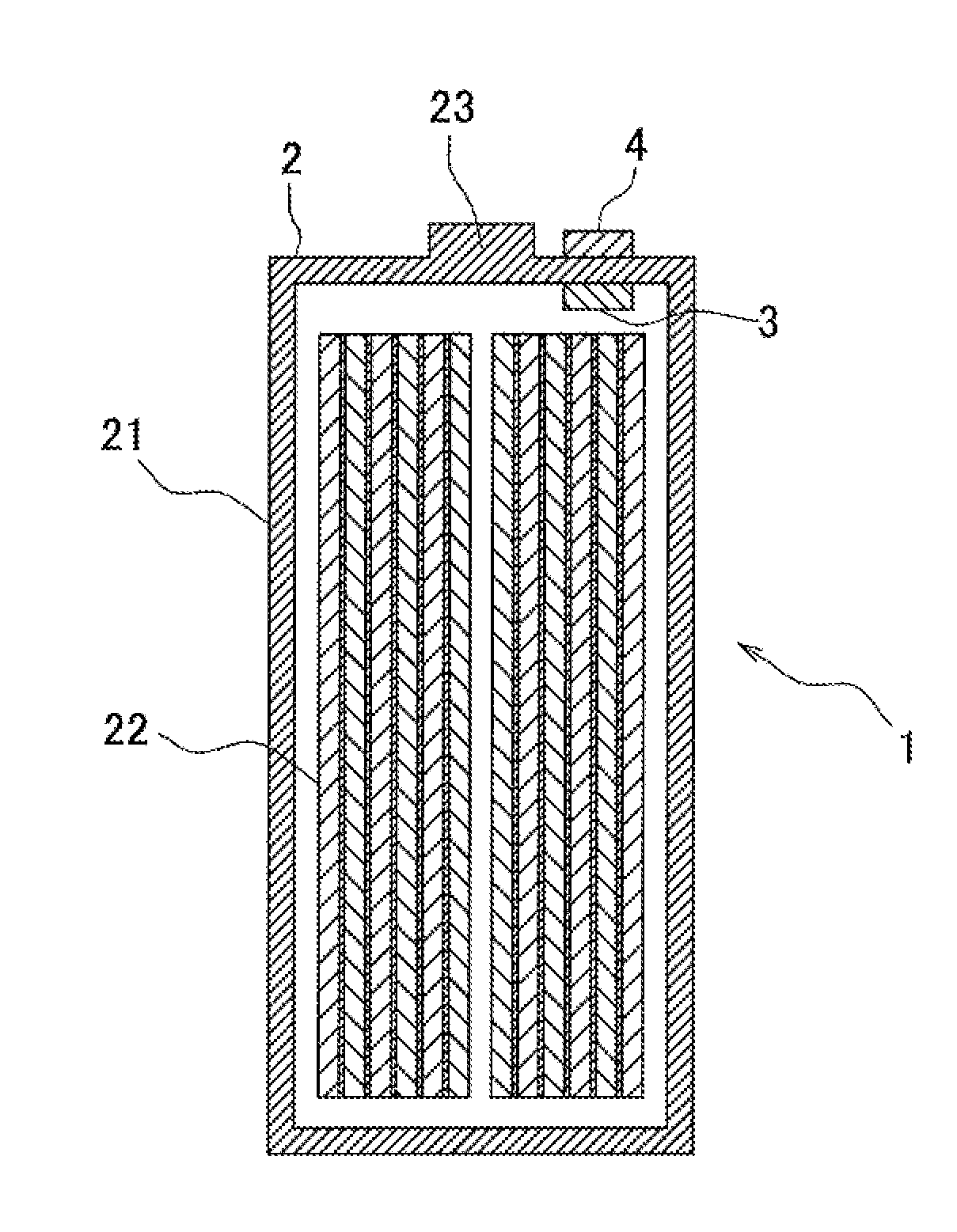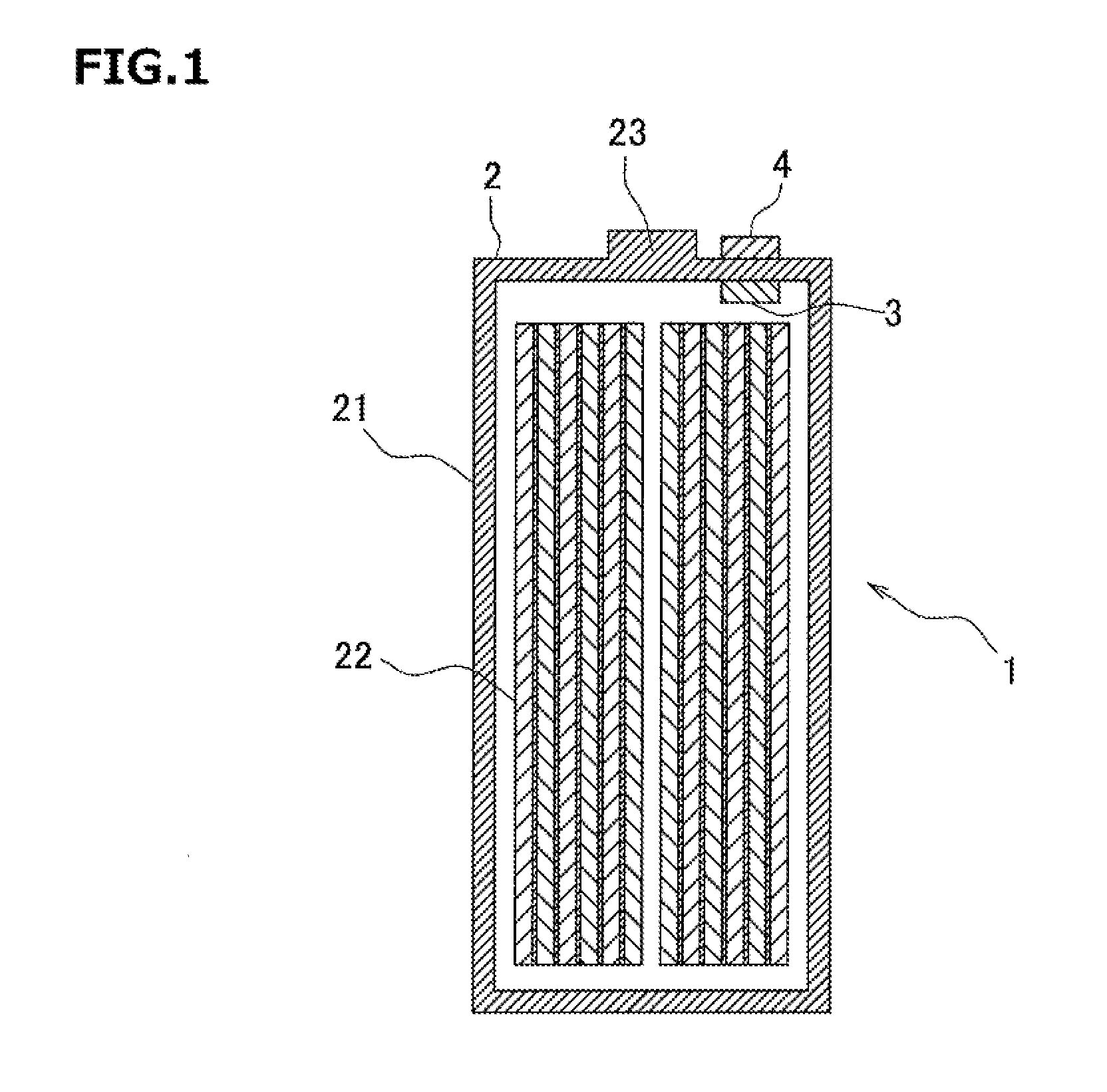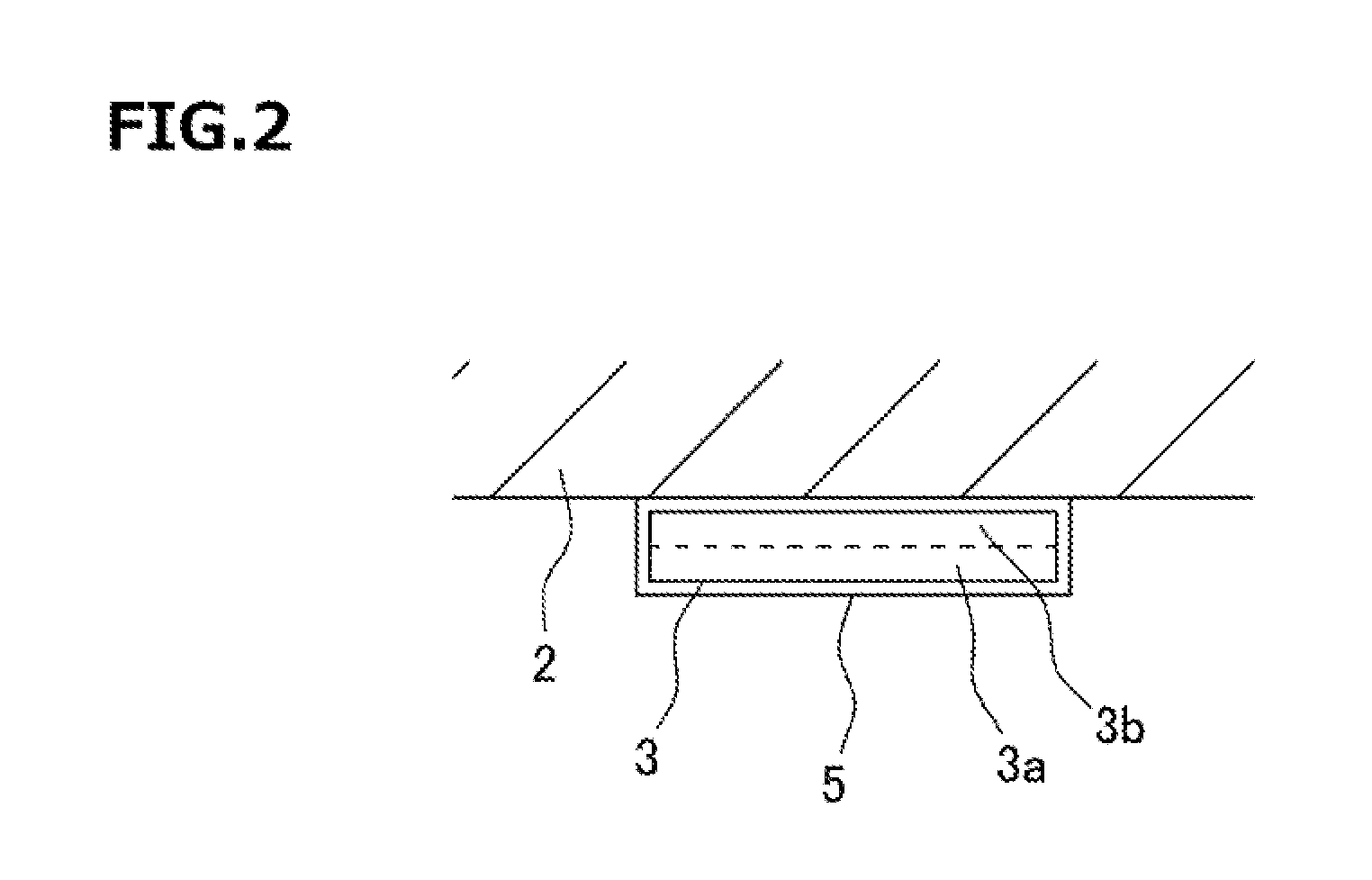Monitoring sensor for sealed secondary battery, sealed secondary battery, and monitoring method for sealed secondary battery
a secondary battery and monitoring sensor technology, applied in the direction of batteries, sustainable manufacturing/processing, instruments, etc., can solve the problems of secondary battery rupture, detection is not carried out, and the sealing structure is hindered, so as to achieve the effect of high sensitivity and no obstruction of the sealing structur
- Summary
- Abstract
- Description
- Claims
- Application Information
AI Technical Summary
Benefits of technology
Problems solved by technology
Method used
Image
Examples
example 1
[0092]Into a reaction container, 40.0 parts by weight, of the polyol A (polyoxypropylene glycol obtained by adding propylene oxide to glycerin as an initiator, hydroxyl value of 56, number of functional groups being 3, manufactured by Asahi Glass Co., Ltd., EX-3030) and 40.0 parts by weight of the polyol B (polyoxypropylene glycol obtained by adding propylene oxide to propylene glycol as an initiator, hydroxyl value of 56, number of functional groups being 2, manufactured by Asahi Glass Co., Ltd., EX-2020) were put, and vacuum-dehydrated while being stirred for 1 hour. Thereafter, the inside of the reaction container was replaced with nitrogen. Subsequently, 20.0 parts by weight of p-MDI (diphenylmethane diisocyanate, manufactured by Nippon Polyurethane Industry Co., Ltd., MILLIONATE MTL) was added into the reaction container. While keeping the temperature of the inside of the reaction container at 80° C., the reaction was carried out for 3 hours to synthesize an isocyanate-terminat...
examples 2 to 7
[0094]Magnetic polyurethane resins were obtained in the same manner as in Example 1 on the basis of the blended components and production conditions shown in Table 2.
example 8
[0095]A filler dispersion liquid was prepared by adding 476.0 parts by weight of a neodymium-based filler (manufactured by Aichi Steel Corporation, MF-15P, average particle size of 133 μm) into a mixture liquid of 100.0 parts by weight of the above prepolymer A, 5.0 parts by weight of a silicone-based foam stabilizer (manufactured by Dow Corning Toray Co., Ltd., L-5340), and 0.42 part by weight of bismuth octylate (manufactured by Nippon Chemical Industrial Co., Ltd., BTT-24). This filler dispersion liquid was subjected to vigorous primary stirring for 5 minutes so as to take bubbles into the reaction system by using a stirring blade at a rotation number of 1000 rpm. Thereafter, 80.0 parts by weight of the above polyol A was added, and the resultant was subjected to secondary stirring for 3 minutes to prepare a bubble dispersion urethane composition containing the magnetic filler.
[0096]The above bubble dispersion urethane composition was dropped onto a PET film which had been subjec...
PUM
| Property | Measurement | Unit |
|---|---|---|
| elastic modulus | aaaaa | aaaaa |
| internal pressure | aaaaa | aaaaa |
| elastic modulus | aaaaa | aaaaa |
Abstract
Description
Claims
Application Information
 Login to View More
Login to View More - R&D
- Intellectual Property
- Life Sciences
- Materials
- Tech Scout
- Unparalleled Data Quality
- Higher Quality Content
- 60% Fewer Hallucinations
Browse by: Latest US Patents, China's latest patents, Technical Efficacy Thesaurus, Application Domain, Technology Topic, Popular Technical Reports.
© 2025 PatSnap. All rights reserved.Legal|Privacy policy|Modern Slavery Act Transparency Statement|Sitemap|About US| Contact US: help@patsnap.com



